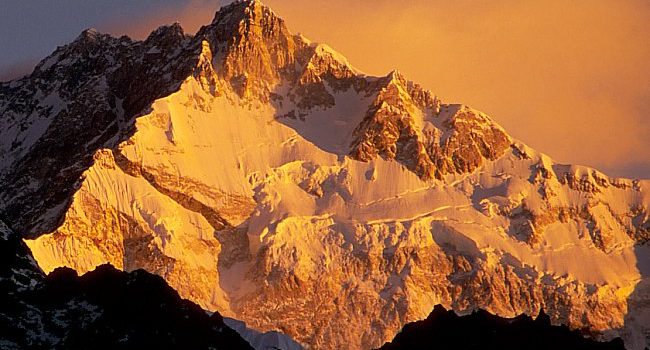Physical Address
304 North Cardinal St.
Dorchester Center, MA 02124
Physical Address
304 North Cardinal St.
Dorchester Center, MA 02124

Mount Kangchenjunga, the third highest peak in the world, stands at 8,586 meters (28,169 feet) and straddles the border between Nepal and the Indian state of Sikkim. It is part of the Himalayan range and is revered for its majestic beauty and significant cultural importance.
The first successful ascent of Kangchenjunga was made on May 25, 1955, by Joe Brown and George Band, members of a British expedition. Interestingly, the climbers stopped just short of the summit, respecting the local customs which consider the peak sacred.
The Kangchenjunga region is rich in biodiversity. The area around the mountain is home to:
The diverse flora and fauna of the Kangchenjunga region are subjects of extensive biological research. Scientists study endemic species and their interactions within the ecosystem, which helps in the development of conservation strategies. Research in this area contributes to global biodiversity knowledge and aids in protecting endangered species.
The Kangchenjunga Conservation Area in Nepal and the Khangchendzonga National Park in India aim to protect the unique ecosystem and the cultural heritage of the region. These conservation areas help maintain the delicate balance between nature and human activity.
While the peak itself is less frequented due to its difficulty, the surrounding region offers several trekking routes that provide stunning views of Kangchenjunga. The treks offer a chance to experience the local culture, flora, and fauna.
Challenges
Climbing Kangchenjunga poses significant challenges due to its steep slopes, unpredictable weather, and technical difficulties. Despite these challenges, it remains a sought-after destination for experienced mountaineers.
Mount Kangchenjunga, with its towering presence and profound cultural significance, continues to be a symbol of natural grandeur and spiritual reverence in the Himalayas.
Kangchenjunga holds deep cultural and religious significance for the local communities. In Sikkim, the mountain is considered sacred, and various legends and myths are associated with it. One of the most prominent legends is that the mountain is home to the five treasures: salt, gold, turquoise, precious stones, and holy scriptures. These treasures are said to be protected by the mountain deity.
The regions surrounding Kangchenjunga are inhabited by various ethnic groups, including the Sherpas, Limbus, and Rais. These communities have rich cultural traditions and lifestyles closely tied to the mountain and its environment. The local people are known for their warm hospitality and resilience, living in harmony with the challenging terrain.
The Kangchenjunga region faces several environmental challenges, including:
For adventure enthusiasts, Kangchenjunga offers a range of activities, including:
The regions around Kangchenjunga celebrate various cultural festivals that reflect their rich heritage and traditions. Festivals like the Losar (Tibetan New Year) and the Tihar (Festival of Lights) bring communities together, showcasing their customs, dances, music, and cuisine. These festivals are not only a celebration of culture but also an opportunity to promote cultural tourism and support local economies.
Kangchenjunga’s significance transcends national borders, necessitating international cooperation for its preservation. Nepal and India, along with various international organizations, work together on conservation projects, scientific research, and sustainable tourism initiatives.
In summary, Mount Kangchenjunga is a multifaceted symbol of natural grandeur, cultural heritage, and spiritual reverence. Its towering presence continues to inspire awe and respect, serving as a reminder of the delicate balance between human activity and the natural world. Preserving Kangchenjunga for future generations requires concerted efforts in conservation, sustainable tourism, and international cooperation.